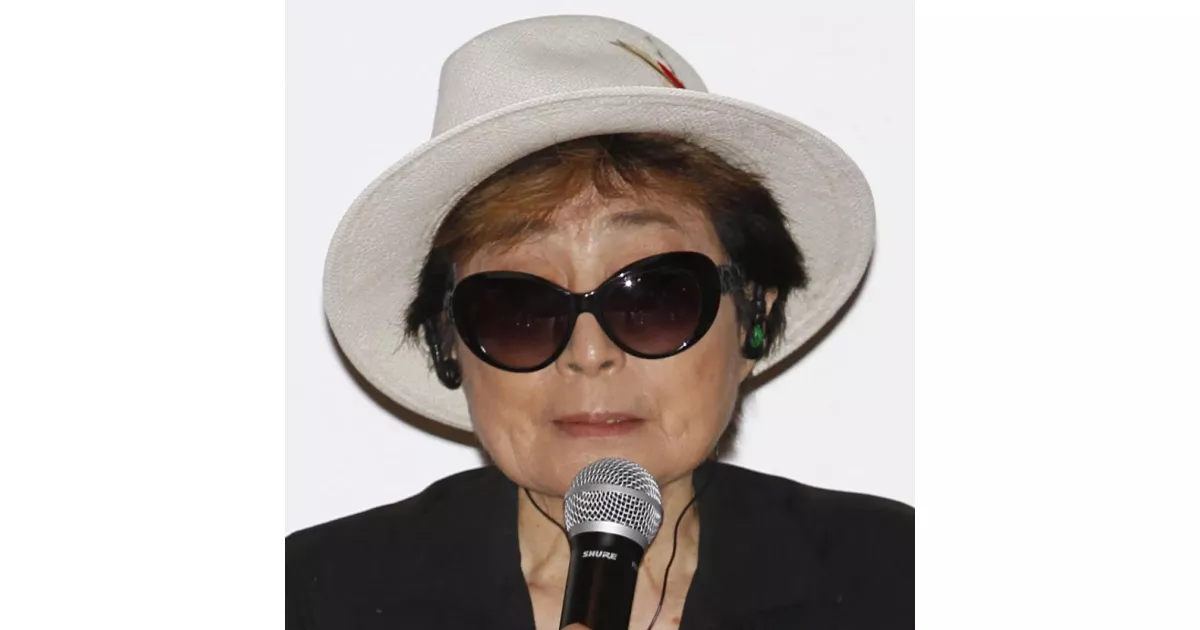Yoko Ono is a Japanese multimedia artist, singer, songwriter, and peace activist. Her artistic endeavors span various mediums, including performance art and filmmaking. She is best known for her avant-garde art and her marriage to John Lennon, with whom she collaborated on music and peace campaigns. Ono's work often addresses themes of feminism, peace, and social justice, and she continues to be an influential figure in contemporary art and activism.
1911: Birth of Isoko Ono
In 1911, Isoko Ono, Yoko Ono's mother, was born. She came from a family with ties to the Yasuda clan and zaibatsu.
December 1936: Birth of Keisuke Ono
In December 1936, Yoko Ono's younger brother, Keisuke Ono, was born. Two weeks before Yoko's birth, her father had been transferred to San Francisco.
1940: Move to New York City
In 1940, Yoko Ono's family moved to New York City. The following year, the family returned to Japan.
1945: Family Moves to the United States
After the war ended in 1945, Yoko Ono remained in Japan when her family moved to the United States and settled in Scarsdale, New York.
1951: Graduation from Gakushūin
In 1951, Yoko Ono graduated from Gakushūin and was accepted into the philosophy program of Gakushuin University, becoming the first woman to enter the department.
September 1952: Enrollment at Sarah Lawrence College
In September 1952, Yoko Ono joined her family in New York and enrolled at nearby Sarah Lawrence College.
1952: Move to New York City
In 1952, Yoko Ono moved to New York City to join her family and became involved in the downtown artists scene in the early 1960s.
1956: Elopement with Toshi Ichiyanagi
In 1956, Yoko Ono left college to elope with Japanese composer Toshi Ichiyanagi, who was studying at Juilliard.
1957: Move to New York and Work
In 1957, Yoko Ono left college and moved to New York, supporting herself through secretarial work and lessons in the traditional Japanese arts at the Japan Society.
December 1960: Loft Series Begins
From December 1960 through June 1961, Yoko Ono and La Monte Young held a series of avant-garde events in Ono's loft at 112 Chambers Street in downtown Manhattan, attended by artists like Marcel Duchamp and Peggy Guggenheim. Ono presented her work once during the series.
1960: Enactment of Add Color Painting Series
In 1960, Yoko Ono first enacted her Add Color Painting series, inviting the audience to make marks over designated objects, often white, which later inspired works like Refugee Boat.
1960: Beginning of MOMA Retrospective
In 1960, Yoko Ono's early work was included in the retrospective, "Yoko Ono: One Woman Show, 1960– 1971 at the Museum of Modern Art in New York City.
June 1961: End of Loft Series
From December 1960 through June 1961, Yoko Ono and La Monte Young held a series of avant-garde events in Ono's loft at 112 Chambers Street in downtown Manhattan. The series came to a close in June 1961.
July 1961: Exhibition at AG Gallery
In July 1961, Yoko Ono showed her instructional work again at Macunias's AG Gallery, including Painting to Be Stepped On. She showed this work and other instructional work again at Macunias's AG Gallery in July 1961.
1961: First Solo Exhibition at AG Gallery
In 1961, George Maciunas gave Yoko Ono her first solo exhibition at his AG Gallery in New York, marking a significant step in her art career. She was also invited to join Fluxus, but declined.
1961: First Major Public Performance
In 1961, Yoko Ono had her first major public performance in a concert at the Carnegie Recital Hall. This concert featured radical experimental music and performances.
November 28, 1962: Marriage to Anthony Cox
On November 28, 1962, Yoko Ono married Anthony Cox, an American film producer and art promoter who had been instrumental in securing her release from the mental institution.
1962: Divorce and Mental Institution
In 1962, Yoko Ono and Toshi Ichiyanagi divorced. Ono returned home to live with her parents and, suffering from clinical depression, was briefly placed into a Japanese mental institution.
1962: Album cover art for Nirvana Symphony
In 1962, Yoko Ono is credited for the album cover art for the album Nirvana Symphony by Toshiro Mayuzumi, released by Time Records.
March 1, 1963: Annulment of Second Marriage
On March 1, 1963, Yoko Ono's second marriage to Anthony Cox was annulled because she had neglected to finalize her divorce from Ichiyanagi.
June 6, 1963: Second Marriage to Anthony Cox
On June 6, 1963, after finalizing her divorce from Ichiyanagi, Yoko Ono married Anthony Cox again.
August 8, 1963: Birth of Kyoko Chan Cox
On August 8, 1963, Yoko Ono gave birth to her daughter, Kyoko Chan Cox.
1964: Began Experimental Filmmaking
In 1964, Yoko Ono began her career as an experimental filmmaker, making 16 films between 1964 and 1972.
1964: First Performance of Cut Piece
In 1964, Yoko Ono first performed "Cut Piece" at the Yamaichi Concert Hall in Kyoto, Japan, a performance art piece where she invited audience members to cut pieces of her clothing off.
1964: First Publication of Grapefruit
In 1964, Yoko Ono's book titled Grapefruit was first published, a set of instructions through which the work of art is completed.
1965: Acting in Satan's Bed
In 1965, Yoko Ono acted in an obscure exploitation film called Satan's Bed.
1965: Debut of Cut Piece
In 1965, Yoko Ono had a second engagement at the Carnegie Recital Hall, in which she debuted her performance art piece, Cut Piece.
1965: Performance of Cut Piece at Carnegie Hall
In 1965, Yoko Ono performed "Cut Piece" at Carnegie Hall in New York.
February 1966: Publication of Fluxus Magazine cc V TRE, No. 7
In February 1966, a 20-piece collection conjoining short instructional texts by Ono with Maciunas' graphic illustrations was published in the No. 7 issue of the Fluxus magazine cc V TRE.
September 1966: Participation in Destruction in Art Symposium
In September 1966, Yoko Ono visited London to meet artist and political activist Gustav Metzger's Destruction in Art Symposium. She was the only woman artist chosen to perform her own events.
November 7, 1966: First Meeting with John Lennon
On November 7, 1966, Yoko Ono and John Lennon first met at the Indica Gallery in London, where she was preparing her conceptual art exhibit, Unfinished Paintings. Lennon was particularly struck by her piece, Ceiling Painting/Yes Painting.
1966: YES Sculptural Work at Indica Gallery
In 1966, Yoko Ono displayed a sculptural work titled "YES" at the Indica Gallery in London, featuring viewers climbing a ladder to read the word "yes" printed on a small canvas.
1966: Performance of Cut Piece at the Destruction in Art Symposium
In 1966, Yoko Ono performed "Cut Piece" at London's Africa Center as part of the Destruction in Art Symposium.
1966: Release of the Fluxus Film No. 4 (Bottoms)
In 1966, Yoko Ono released a Fluxus film called No. 4, often referred to as Bottoms, which consists of close-ups of human buttocks walking on a treadmill.
September 1967: Lennon Sponsors Ono's Art Show
In September 1967, John Lennon sponsored Yoko Ono's solo Half-A-Wind Show at Lisson Gallery in London, marking a significant step in their relationship.
1967: Plastic Ono Band Concept Originated
The Plastic Ono Band was first conceived by Yoko Ono in 1967 as an idea for an art exhibition in Berlin, evolving from her Fluxus concept.
May 1968: Lennon and Ono's First Collaboration
In May 1968, while his wife was away, John Lennon invited Yoko Ono to visit, and they spent the night recording avant-garde tape loops, leading to their first collaborative album, Unfinished Music No. 1: Two Virgins.
November 21, 1968: Miscarriage of Lennon and Ono's Child
On November 21, 1968, Yoko Ono had a miscarriage of a male child, a few weeks after John Lennon's divorce from Cynthia was granted.
December 12, 1968: Participation in The Rolling Stones Rock And Roll Circus
On December 12, 1968, John Lennon and Yoko Ono participated in the BBC documentary about The Rolling Stones, The Rolling Stones Rock And Roll Circus. Lennon performed his Beatles composition "Yer Blues" with an improvised vocal performance by Ono rounding out the set.
1968: Formation of the Plastic Ono Band
In 1968, John Lennon and Yoko Ono began crediting their work to The Plastic Ono Band, leading to various art exhibitions, concerts, and experimental music projects.
1968: Collaboration on Avant-Garde Recordings and Beatles' Album
In 1968, John Lennon and Yoko Ono began their series of avant-garde recordings with Unfinished Music No.1: Two Virgins and contributed to The Beatles' "White Album," with Ono adding vocals to "Birthday" and "The Continuing Story of Bungalow Bill."
1968: Beginning of the re-issued album period
In September 6, 2016, Secretly Canadian announced that they would be re-issuing 11 of Ono's albums from 1968 to 1985; Unfinished Music No. 1: Two Virgins through Starpeace.
February 2, 1969: Divorce from Anthony Cox
On February 2, 1969, Yoko Ono and Anthony Cox divorced, paving the way for her marriage to John Lennon later that year.
March 1969: "Bed-in for Peace" in Amsterdam
In March 1969, Yoko Ono and John Lennon held a "Bed-in for Peace" in their honeymoon suite at the Amsterdam Hilton Hotel, promoting world peace by wearing pajamas and inviting visitors and press.
March 20, 1969: Lennon and Ono's Marriage and Bed-In for Peace
On March 20, 1969, John Lennon and Yoko Ono were married in Gibraltar and spent their honeymoon in Amsterdam campaigning with a week-long bed-in for peace.
April 22, 1969: Lennon's Name Change
On April 22, 1969, John Lennon changed his name by deed poll, replacing Winston with Ono as a middle name.
June 1969: Car Crash and Studio Presence
In June 1969, John Lennon and Yoko Ono were involved in a car crash during the recording of Abbey Road. Following the accident, a bed with a microphone was set up in the studio for Ono to provide artistic input on the album. This constant presence of Ono in the studio reportedly strained Lennon's relationships with the other Beatles, leading to friction within the band. There was also an incident of Ono taking George Harrison's chocolate digestive biscuits without asking.
July 1969: Release of "Give Peace a Chance"
In July 1969, John Lennon's first solo single, "Give Peace a Chance", backed by Yoko Ono's "Remember Love", was released and credited to the Plastic Ono Band.
December 1969: "WAR IS OVER!" Billboard Campaign
In December 1969, Yoko Ono and John Lennon continued their message of peace with billboards in 12 major world cities reading "WAR IS OVER! If You Want It – Happy Christmas from John & Yoko".
1969: Career in Popular Music Begins
In 1969, Yoko Ono began her career in popular music and formed the Plastic Ono Band with John Lennon, producing a number of avant-garde music albums in the 1970s.
1969: Marriage to John Lennon
In 1969, Yoko Ono married English musician John Lennon of the Beatles and began a career in popular music by forming the Plastic Ono Band with Lennon. They used their honeymoon as a stage for public protests against the Vietnam War with what they called a bed-in.
1969: Labelled "The Woman Who Broke Up the Beatles"
In 1969, Yoko Ono was dubbed "the woman who broke up the Beatles" by the English press. Paul McCartney had foreseen this perception during rehearsals for the Let It Be film and album. John Lennon and George Harrison denied that Ono caused the breakup, while Ono stated that the Beatles broke up without her direct involvement.
1969: Release of Live Peace in Toronto 1969
John Lennon and Yoko Ono's album Live Peace in Toronto 1969 featuring Ono's song "Don't Worry, Kyoko" was released in 1969.
1970: Relocation to Manhattan
After the Beatles disbanded in 1970, Yoko Ono and John Lennon moved permanently to Manhattan to escape tabloid racism towards Ono.
1970: Release of Yoko Ono/Plastic Ono Band Album
In 1970, Yoko Ono released her first solo album, Yoko Ono/Plastic Ono Band, as a companion piece to John Lennon's album of the same name.
1970: Collaboration with Lennon on the film Fly
Yoko Ono collaborated with John Lennon on the film Fly in 1970.
June 5, 1971: Performance with Frank Zappa at the Fillmore
On June 5, 1971, Yoko Ono joined John Lennon in performing with Frank Zappa at the Fillmore.
1971: Custody Battle and Disappearance of Kyoko
During a 1971 custody battle, Anthony Cox disappeared with their eight-year-old daughter Kyoko. Cox won custody after claiming that Ono was an unfit mother due to drug use.
1971: Re-publication of Grapefruit
In 1971, Simon & Schuster published Yoko Ono's Grapefruit, distributing it widely.
1971: End of MOMA Retrospective
In 1971, Yoko Ono's early work was included in the retrospective, "Yoko Ono: One Woman Show, 1960– 1971 at the Museum of Modern Art in New York City.
1971: This Is Not Here Exhibition at Everson Museum
In 1971, Yoko Ono's highly publicized retrospective exhibition, This Is Not Here, was held at the Everson Museum in Syracuse, New York. It was nearly closed when excited Beatles fans besieged it, breaking art pieces and flooding the toilets.
1971: Fly album release
In 1971, the soundtrack of the film Fly (1970) appeared on her album Fly.
1972: Release of Approximately Infinite Universe album
In 1972, Yoko Ono released her album Approximately Infinite Universe, which included the song "Death of Samantha".
1972: Inclusion in 'Some Living American Women Artists / Last Supper'
In 1972, Yoko Ono was featured in Mary Beth Edelson's 'Some Living American Women Artists / Last Supper,' a feminist artwork appropriating Leonardo da Vinci's 'The Last Supper.' This piece, with heads of notable women artists collaged over Christ and his apostles, became an iconic image of the feminist art movement.
1972: Release of Happy Xmas (War Is Over) in the UK
Originally a protest song about the Vietnam War, "Happy Xmas (War Is Over)" by John Lennon and Yoko Ono, was released in the UK in 1972, after being delayed, and has since become a Christmas standard.
1972: Experimental filmmaker
Yoko Ono made 16 films between 1964 and 1972.
July 1973: Separation from Lennon
In July 1973, Yoko Ono and John Lennon separated, with Ono pursuing her career and Lennon living between Los Angeles and New York with May Pang.
1973: Release of "Joseijoi Banzai, Parts 1 and 2"
In 1973, Yoko Ono recorded the single "Joseijoi Banzai, Parts 1 and 2" with the Plastic Ono Band and Elephants Memory, releasing it only in Japan, and signaling a new musical direction cheering feminism.
1973: Feeling the Space Album
In 1973, the album Feeling the Space was released by Yoko Ono/Plastic Ono Band
March 1974: McCartney's intervention
In March 1974, Paul McCartney visited Yoko Ono and inquired what would make her return to John Lennon, later conveying her response to Lennon in Los Angeles.
December 1974: Consideration of Buying a House with May Pang
By December 1974, John Lennon and May Pang considered buying a house together, and Lennon refused to accept Yoko Ono's phone calls.
1974: Lost weekend sessions
In 1974, Yoko Ono had "lost weekend" sessions, of which previously unreleased material was released in 1992.
October 9, 1975: Birth of Sean Lennon
On October 9, 1975, John Lennon's 35th birthday, Yoko Ono gave birth to their son, Sean Lennon.
1976: Dispute over Lennon-McCartney Songwriting Credits
In 1976, Paul McCartney's live album, Wings over America, credited five Beatles tracks as P. McCartney-J. Lennon compositions. After John Lennon's death, McCartney tried to change the credit order to McCartney-Lennon for songs primarily written by him, like "Yesterday". Yoko Ono opposed this, citing a prior agreement, which led to conflict and accusations of rewriting history.
November 17, 1980: Release of Double Fantasy
On November 17, 1980, John Lennon and Yoko Ono released the album Double Fantasy, which initially received tepid reviews.
December 8, 1980: John Lennon's Murder
On December 8, 1980, John Lennon, Yoko Ono's husband, was murdered in front of their apartment building, The Dakota. They had one son, Sean.
1980: Commercial Success with "Double Fantasy"
In 1980, Yoko Ono achieved commercial and critical success with the chart-topping album Double Fantasy, a collaboration with John Lennon that was released three weeks before his murder and won the Grammy Award for Album of the Year.
1980: Death of John Lennon
In March 2013, Yoko Ono tweeted an anti-gun message with an image of John Lennon's bloodied glasses on what would have been their 44th anniversary, noting that guns have killed more than 1 million people since John Lennon's death in 1980.
1980: Renewed Collaboration with Lennon
In early 1980, John Lennon heard the B-52's' "Rock Lobster" and, reminded of Yoko Ono's musical style, began collaborating with her again, leading to the album Double Fantasy.
1981: Release of album Season of Glass
In 1981, Yoko Ono released the album Season of Glass, featuring a controversial cover photo of John Lennon's glasses. The album received favorable reviews and reflected the public's mood after Lennon's assassination.
1981: Grammy Award for Double Fantasy
In 1981, Yoko Ono won the Grammy Award for Album of the Year for Double Fantasy at the 24th Annual Grammy Awards, following John Lennon's death.
1982: Release of It's Alright album
In 1982, Yoko Ono released the album It's Alright, with a cover featuring Ono and a ghost of Lennon. The single "Never Say Goodbye" achieved minor success.
1983: Band Named After Ono Song
In 1983, the post-punk rock band Death of Samantha was founded, named after a song from Yoko Ono's 1972 album Approximately Infinite Universe.
1984: Release of tribute album and Milk and Honey
In 1984, the tribute album Every Man Has a Woman, featuring various artists performing Ono's songs, was released. Also in 1984, Ono and Lennon's final album, Milk and Honey, was released.
October 9, 1985: Dedication of Strawberry Fields memorial
On October 9, 1985, the Strawberry Fields memorial in Central Park, funded by Yoko Ono, was officially dedicated on what would have been John Lennon's 45th birthday.
1985: End of the re-issued album period
In September 6, 2016, Secretly Canadian announced that they would be re-issuing 11 of Ono's albums from 1968 to 1985; Unfinished Music No. 1: Two Virgins through Starpeace.
1986: Billboard Music Video Awards
In 1986 Yoko Ono's video 'Hell in Paradise' won 'Most Innovative Video' at the Billboard Music Video Awards.
1986: Starpeace goodwill world tour
In 1986, Yoko Ono embarked on a goodwill world tour for Starpeace, focusing on Eastern European countries.
1987: Visit to Moscow and Leningrad
In 1987, Yoko Ono traveled to Moscow to participate in the "International Forum for a Nuclear-free World and for the Survival of Mankind". She also visited Leningrad, where she met with members of the local John Lennon memorial club, including Kolya Vasin.
1987: Attended Andy Warhol's Funeral
In 1987, Yoko Ono was one of the speakers at Andy Warhol's funeral, highlighting her connections within the New York art world.
1987: Ono Interview on Beatles' Disintegration
In a 1987 Rolling Stone interview, Yoko Ono discussed Paul McCartney's role in the Beatles' disintegration.
1989: Yoko Ono: Objects, Films Retrospective at the Whitney
In 1989, Yoko Ono had a major exhibition, Yoko Ono: Objects, Films retrospective at the Whitney.
1989: Whitney Museum Retrospective
In 1989, a retrospective at a Whitney Museum branch helped to improve public appreciation of Yoko Ono's work.
1990: Release of "Be My Yoko Ono" Single
In 1990, Canadian rock band Barenaked Ladies first released "Be My Yoko Ono" as their debut single. The song is described as a shy entreaty, self-deprecatingly comparing the singer to a pop music genius and includes a sarcastic imitation of Yoko Ono's vocal style.
1990: Worldwide broadcast of Imagine
In 1990, Yoko Ono collaborated with Jeff Pollack to honor what would have been John Lennon's 50th birthday with a worldwide broadcast of "Imagine".
1992: Signing with Rykodisc and release of Onobox
In 1992, Yoko Ono signed with Rykodisc and released the six-disc box set Onobox, which included remastered highlights from her solo albums and previously unreleased material.
1992: Release of Onobox
In 1992, the release of the six-disc box set Onobox further contributed to the public's appreciation of Yoko Ono's work.
1992: "Be My Yoko Ono" on album Gordon
In 1992, the song "Be My Yoko Ono" by the Canadian rock band Barenaked Ladies appeared on their album Gordon.
1994: Production of off-Broadway musical New York Rock
In 1994, Yoko Ono produced her own off-Broadway musical entitled New York Rock, which featured Broadway renditions of her songs.
1995: Release of Rising and World Tour
In 1995, Yoko Ono released Rising, a collaboration with her son Sean and his band Ima. This release was followed by a world tour through Europe, Japan, and the United States.
1995: Collaboration and Comparison to Mozart and Salieri
In 1995, after the Beatles released John Lennon's "Free as a Bird" and "Real Love" with demos provided by Yoko Ono, Paul McCartney and his family collaborated with Ono and Sean Lennon to create the song "Hiroshima Sky Is Always Blue", commemorating the 50th anniversary of the atomic bombing of Hiroshima. Ono compared Lennon to Wolfgang Amadeus Mozart and McCartney to Antonio Salieri, which angered McCartney's wife, Linda.
1995: Release of "Talking to the Universe"
Yoko Ono released the song "Talking to the Universe" in 1995.
1996: Release of The Rolling Stones Rock and Roll Circus
Due to the death of The Rolling Stones' founding member Brian Jones a few months after filming, The Rolling Stones Rock and Roll Circus, in which John Lennon and Yoko Ono participated on December 12, 1968, was not released until 1996.
1996: Julian Lennon's Settlement with Ono
In 1996, Julian Lennon settled his legal battle with Yoko Ono over his father's will for an unspecified amount reported to be around £20 million.
1996: Swatch Produced Limited Edition Watch Commemorating Film No. 4
In 1996, the watch manufacturing company Swatch produced a limited edition watch that commemorated Yoko Ono's 1966 film No. 4.
1996: Wish Piece
Yoko Ono's 1996 Wish Piece had the following instructions: Write a wish on a piece of paper, Fold it and tie it around a branch of the tree, Ask your friend to do the same, Keep wishing until the branches are covered with wishes.
1997: Reissue of solo recordings and establishment of John Lennon Scholarships
In 1997, Rykodisc reissued Yoko Ono's catalog of solo recordings on CD. In the same year, Ono and the BMI Foundation established the John Lennon Scholarships to honor Lennon's memory.
1998: Reunion with daughter Kyoko
After a long separation, Yoko Ono reunited with her daughter Kyoko in 1998.
1998: "Give Peace a Chance" Composer Credit Change
In 1998, on the John Lennon anthology, Lennon Legend, the composer credit for "Give Peace a Chance" was changed to "John Lennon" from "Lennon-McCartney", even though Lennon wrote the song during his time with the Beatles. Lennon later regretted not giving Yoko Ono co-writing credit for her contribution.
December 1999: Negative Press from NME
As late as December 1999, NME called Yoko Ono a "no-talent charlatan", reflecting the frequent criticism she faced from the press and public.
1999: Death of Isoko Ono
In 1999, Isoko Ono, Yoko Ono's mother, passed away. She was born in 1911.
1999: Billboard Campaign After Columbine
In 1999, following the Columbine High School massacre, Yoko Ono paid for billboards in New York City and Los Angeles displaying an image of John Lennon's blood-splashed spectacles.
2000: Release of "I Won't Be Your Yoko Ono"
In 2000, American folk singer Dar Williams recorded a song titled "I Won't Be Your Yoko Ono," which uses John and Yoko's relationship as a reference point to explore love between artists.
2000: Reprint of Grapefruit by Simon & Schuster
In 2000, Simon & Schuster reprinted Yoko Ono's Grapefruit.
2000: Founding of the John Lennon Museum
In 2000, Yoko Ono founded the John Lennon Museum in Saitama, Japan, which housed over 130 pieces of Lennon and Beatles memorabilia from her private collection.
2001: Y E S YOKO ONO Retrospective Award
In 2001, Y E S YOKO ONO, a 40-year retrospective of Ono's work, received the International Association of Art Critics USA Award for Best Museum Show Originating in New York City. Also in 2001, she received an honorary Doctorate of Laws from Liverpool University.
2001: Release of feminist concept album and concert for 9/11 relief
In 2001, Yoko Ono released her feminist concept album, Blueprint for a Sunrise. A month after the 9/11 attacks, she organized "Come Together: A Night for John Lennon's Words and Music" to raise money for relief efforts.
2001: Japan Society Retrospective
In 2001, a retrospective of Yoko Ono's artwork was presented at the Japan Society in New York City.
March 2002: Unveiling of John Lennon statue at Liverpool Airport
In March 2002, Yoko Ono was present with Cherie Blair at the unveiling of a statue of John Lennon in Liverpool to mark the renaming of Liverpool airport to Liverpool John Lennon Airport.
April 2002: Sale of Lennon's glasses photograph
In April 2002, the cover photo of Lennon's bloody spectacles from Yoko Ono's 'Season of Glass' album was sold at an auction in London for approximately $13,000.
2002: McCartney's Live Album and Credit Dispute
In 2002, Paul McCartney released the live album Back in the U.S. Live 2002, which credited 19 Beatles songs as "composed by Paul McCartney and John Lennon", reigniting the credit debate with Yoko Ono. Ono's spokesperson accused McCartney of attempting to rewrite history, but Ono did not pursue legal action.
2002: Inauguration of the LennonOno Grant for Peace
In 2002, Yoko Ono inaugurated a biennial $50,000 LennonOno Grant for Peace, demonstrating her commitment to peace and philanthropy.
2002: LennonOno Grant for Peace Inauguration
In 2002, Yoko Ono inaugurated the LennonOno Grant for Peace, awarding $50,000 in prize money to artists living "in regions of conflict" and installed a billboard in Piccadilly Circus with a line from Lennon's "Imagine": "Imagine all the people living life in peace."
2002: Honorary Degree from Bard College
In 2002, Yoko Ono was presented with the honorary degree of Doctor of Fine Arts from Bard College and the Skowhegan Medal for work in assorted media.
2002: Ono Discusses Attraction to Lennon
In a 2002 interview, Yoko Ono discussed her initial attraction to John Lennon, describing it as a "really strange situation."
April 2003: Walking on Thin Ice Remixes reached number 1
In April 2003, Yoko Ono's Walking on Thin Ice (Remixes) reached number 1 on Billboard's Dance/Club Play chart, giving Ono her first no. 1 hit.
2003: Reprising of Cut Piece in Paris
In 2003, Yoko Ono reprised her performance art piece "Cut Piece" in Paris, hoping to show the need for trust during the period between the US and France.
2003: Support for Love-In Protest
On Valentine's Day in 2003, on the eve of the Iraqi invasion, Yoko Ono contacted Andrew and Christine Gale, who were holding a love-in protest in Addingham, West Yorkshire, offering her support.
March 2004: The Rare Films of Yoko Ono Exhibition
In March 2004, the ICA London, showed most of Yoko Ono's films from her early period in their exhibition, The Rare Films of Yoko Ono.
November 2004: Everyman... Everywoman... hit number 1
In November 2004, Yoko Ono had her second number 1 hit on Billboard's Dance/Club Play chart with "Everyman... Everywoman...", a reworking of her song "Every Man Has a Woman Who Loves Him".
2004: Installation of My Mummy Was Beautiful
In 2004, Yoko Ono installed "My Mummy Was Beautiful" during the Liverpool Biennial, displaying images of a woman's naked breast and vulva to represent a baby's innocent view of its mother's body, dedicating it to John Lennon's mother.
2004: "Everyman..... Everywoman....." Remix Release
In 2004, Yoko Ono remade her song "Everyman..... Everywoman....." to support same-sex marriage, releasing remixes including "Every Man Has a Man Who Loves Him" and "Every Woman Has a Woman Who Loves Her".
2005: Ono's Speech at the Q Awards
At the 2005 Q Awards, while accepting an award, Yoko Ono shared that John Lennon had felt insecure about his songwriting. She reassured him of his talent as a songwriter and singer, also stating that other musicians may be nervous about covering his songs.
2005: Lifetime Achievement Award from Japan Society
In 2005, Yoko Ono received a lifetime achievement award from the Japan Society of New York, where she had worked in the late 1950s and early 1960s, and which had hosted Yes Yoko Ono.
2005: Visit to Portland, Maine
In 2005, Yoko Ono visited Portland, Maine, with memories of driving along the coast with John Lennon and dreaming of buying a house there.
December 13, 2006: Arrest of Ono's bodyguard for attempted extortion
On December 13, 2006, Yoko Ono's bodyguard was arrested for allegedly trying to extort $2 million from her, threatening to release private conversations and photographs.
2006: Performance at the Winter Olympic Games
In 2006, Yoko Ono performed at the opening ceremony of the Winter Olympic Games in Turin, Italy, reading a poem calling for world peace as an introduction to Peter Gabriel's performance of "Imagine".
February 2007: Release of Yes, I'm a Witch
In February 2007, Yoko Ono released Yes, I'm a Witch, a compilation of remixes and covers of her songs by various artists.
February 16, 2007: Resolution of bodyguard extortion case
On February 16, 2007, Yoko Ono's bodyguard pleaded guilty to attempted grand larceny and was sentenced to time served, resolving the extortion case that began in December 2006.
June 26, 2007: Appearance on Larry King Live
On June 26, 2007, Yoko Ono appeared on Larry King Live alongside Paul McCartney, Ringo Starr, and Olivia Harrison.
July 14, 2007: Headlining the Pitchfork Music Festival
On July 14, 2007, Yoko Ono headlined the Pitchfork Music Festival in Chicago, performing a set that combined music and performance art.
October 16, 2007: Interview with Amy Goodman
On October 16, 2007, Yoko Ono told Amy Goodman of Democracy Now! that her father was in a concentration camp in Saigon during the war.
January 2008: No No No hit number 1
In January 2008, Yoko Ono's "No No No" reached number 1 on the Dance/Club Play chart.
2008: Unveiling Sky Ladders in Liverpool
In 2008, Yoko Ono returned to Liverpool for the Liverpool Biennial, where she unveiled Sky Ladders in the ruins of Church of St Luke.
2008: Exhibitions in Germany and the UK
In 2008, retrospectives of Yoko Ono's artwork were presented in Bielefeld, Germany, and the UK.
March 31, 2009: Inauguration of the Imagine Exhibition
On March 31, 2009, Yoko Ono attended the inauguration of the exhibition "Imagine: The Peace Ballad of John & Yoko" to mark the 40th anniversary of the Lennon-Ono Bed-In.
May 2009: Design of T-shirt for Fashion Against AIDS
In May 2009, Yoko Ono designed a T-shirt for the Fashion Against AIDS campaign, featuring the statement "Imagine Peace" in 21 languages.
June 1, 2009: Promotion of The Beatles: Rock Band at E3 Expo
On June 1, 2009, Yoko Ono appeared onstage with Olivia Harrison, Paul McCartney, and Ringo Starr at Microsoft's E3 Expo press conference to promote The Beatles: Rock Band video game.
June 2009: I'm Not Getting Enough hit number 1
In June 2009, at the age of 76, Yoko Ono achieved her fifth number 1 hit on the Dance/Club Play chart with "I'm Not Getting Enough".
2009: Golden Lion Award
In 2009, Yoko Ono received a Golden Lion Award for lifetime achievement from the Venice Biennale.
2009: Recording Between My Head and the Sky
In 2009, Yoko Ono recorded Between My Head and the Sky, her first album released as "Yoko Ono/Plastic Ono Band" since 1973.
2009: Anton's Memory Show and Golden Lion Award
In 2009, Yoko Ono showed a selection of new and old work as part of her show "Anton's Memory" in Venice, Italy. She also received a Golden Lion Award for lifetime achievement from the Venice Biennale.
2009: Donation to disaster relief efforts
Yoko Ono was given a Congressional citation from the Philippines for her monetary aid to the victims of typhoon Pablo, as well as her donation to disaster relief efforts after typhoon Ondoy in 2009 and assistance of Filipino schoolchildren.
February 16, 2010: We Are Plastic Ono Band Concert
On February 16, 2010, Sean Lennon organized a concert at the Brooklyn Academy of Music called "We Are Plastic Ono Band", at which Yoko performed her music with Sean and other musicians.
April 1, 2010: Named Global Autism Ambassador
On April 1, 2010, Yoko Ono was named the first "Global Autism Ambassador" by the Autism Speaks organization for her artwork created the year before for autism awareness.
April 2010: Free Downloads of Junior Boys' Mix of "I'm Not Getting Enough"
In April 2010, RCRD LBL made available free downloads of Junior Boys' mix of "I'm Not Getting Enough", originally released 10 years prior on Blueprint for a Sunrise.
July 2010: Wish Tree Installation at MoMA
In July 2010, Yoko Ono's Wish Tree installation was established in the Sculpture Garden of the Museum of Modern Art in New York, attracting contributions from all over the world.
October 2010: Ono Credits McCartney with Helping Save Her Marriage
In an October 2010 interview, Yoko Ono discussed John Lennon's "lost weekend" and their reconciliation. She credited Paul McCartney with playing a touching role in saving her marriage to John.
2010: Attendance at Julian Lennon's Photo Exhibition
In 2010, Yoko Ono and Sean Lennon attended the opening of Julian Lennon's photo exhibition at the Morrison Hotel in New York City. It was the first time Ono, Sean, Cynthia Lennon, and Julian Lennon were photographed together. Ono also promoted the exhibition on her website.
2010: Closure of the John Lennon Museum
In 2010, the John Lennon Museum in Saitama, Japan, which Yoko Ono funded, closed. This museum was dedicated to preserving the legacy of John Lennon.
February 18, 2011: Imagine Peace 2011 Advert
On February 18, 2011, her 78th birthday, Yoko Ono placed a full-page advert in the UK newspaper Metro for "Imagine Peace 2011", inviting people to think of and wish for peace.
July 2011: Visit to Japan to Support Earthquake and Tsunami Victims
In July 2011, Yoko Ono visited Japan to support earthquake and tsunami victims and promote tourism. She gave a lecture and performance called "The Road of Hope" at Tokyo's Mori Art Museum and painted "Dream" to raise funds for the Rainbow House.
August 2011: Bed Peace Documentary Release
In August 2011, Yoko Ono made the documentary film about the Bed-ins, Bed Peace, available for free on YouTube and as part of her website "Imagine Peace".
2011: Imagine Peace Installed in Houston
Imagine Peace was installed in Houston in 2011 through the Deborah Colton Gallery.
January 2012: "Talking to the Universe" Became No. 1 Hit
In January 2012, a Ralphi Rosario mix of Yoko Ono's 1995 song "Talking to the Universe" became her seventh consecutive No. 1 hit on the Billboard Hot Dance Club Songs chart.
June 29, 2012: Lifetime Achievement Award at the Dublin Biennial
On June 29, 2012, Yoko Ono received a lifetime achievement award at the Dublin Biennial. She also visited the crypt of Daniel O'Connell and Dún Laoghaire during her trip to Ireland.
August 2012: Creation of Artists Against Fracking
In August 2012, Yoko Ono and Sean Lennon created the Artists Against Fracking group with Mark Ruffalo to protest against hydraulic fracturing.
2012: McCartney on Ono's Influence
In 2012, Paul McCartney stated that he did not blame Yoko Ono for the breakup of the Beatles and acknowledged her inspiration for much of John Lennon's post-Beatles work.
2012: To The Light Exhibition and Oskar Kokoschka Prize
In 2012, Yoko Ono held a major exhibition of her work To The Light at the Serpentine Galleries, London. She also won the 2012 Oskar Kokoschka Prize, Austria's highest award for applied contemporary art.
2012: Dr. Rainer Hildebrandt Human Rights Award and Artists Against Fracking
In 2012, Yoko Ono received the Dr. Rainer Hildebrandt Human Rights Award and co-founded the group Artists Against Fracking, highlighting her continued activism and advocacy for human rights and environmental causes.
2012: Oskar Kokoschka Prize
In 2012, Yoko Ono received the Oskar Kokoschka Prize, Austria's highest award for applied contemporary art.
January 2013: Protest Against Hydraulic Fracturing
In January 2013, Yoko Ono, along with Sean Lennon and Susan Sarandon, protested against hydraulic fracturing in rural Pennsylvania under the banner of Artists Against Fracking.
February 2013: Acceptance of the Rainer Hildebrandt Medal
In February 2013, Yoko Ono accepted the Rainer Hildebrandt Medal at Berlin's Checkpoint Charlie Museum, awarded to her and John Lennon for their work for peace and human rights.
February 2013: Half-a-Wind Show Retrospective
In February 2013, coinciding with her 80th birthday, the largest retrospective of Yoko Ono's work, Half-a-Wind Show, opened at the Schirn Kunsthalle Frankfurt and traveled to various museums.
June 2013: Curated Meltdown Festival in London
In June 2013, Yoko Ono curated the Meltdown festival in London, where she played two concerts: one with the Plastic Ono Band, and the second on backing vocals during Siouxsie Sioux's rendition of "Walking on Thin Ice" at the Double Fantasy show.
July 2013: Release of Acorn
In July 2013, Yoko Ono released a sequel to Grapefruit, another book of instructions titled Acorn.
November 2013: Release of "Bad Dancer" Online Video
In November 2013, Yoko Ono's online video for "Bad Dancer", featuring several guests, was released and well-received by the press.
November 24, 2013: Arising Exhibition
On November 24, 2013, the Personal Structures exhibition, organized by Global Art Affairs, was on view at the European Cultural Centre's Palazzo Bembo, featuring Ono's piece "Arising in Venice."
2013: Visit to Garden of the Phoenix
In 2013, Yoko Ono visited the Garden of the Phoenix in Chicago, which inspired her to create a permanent art installation in Jackson Park.
2013: Central Theme in James Acaster's Show
In 2013, Yoko Ono was a central theme in English comedian James Acaster's show Lawnmower, which was nominated for the Edinburgh Comedy Award for Best Show.
2013: Exhibitions in Germany and Spain
In 2013, retrospectives of Yoko Ono's artwork were presented in Frankfurt and Bilbao, Spain.
2013: Peaches Reprised Cut Piece at Meltdown Festival
In 2013, the Canadian singer Peaches reprised Yoko Ono's "Cut Piece" at the Meltdown festival in London, which Ono curated.
April 2014: Social Media Following
In April 2014, Yoko Ono's Twitter followers reached 4.69 million, while her Instagram followers exceeded 99,000, highlighting her active presence on social media.
2014: Imagine Peace Exhibit in Fort Myers
In 2014 Yoko Ono's Imagine Peace exhibit opened at the Bob Rauschenburg Gallery at Florida SouthWestern State College in Fort Myers, Florida. Ono installed a billboard on U.S. Route 41 to promote the show and peace.
2014: "Angel" was Ono's twelfth number one on the US Dance chart.
In 2014, "Angel" became Yoko Ono's twelfth number one hit on the US Dance chart.
2014: Folkestone Art Festival Contribution
In 2014, Yoko Ono contributed several artworks to the triennial Folkestone art festival.
2014: Earth Peace Installation
In 2014, Yoko Ono installed Earth Peace as part of the Folkestone Triennial. The artwork included posters, stickers, billboards, and badges around Folkestone. Three pieces remain on loan to the town, including an inscribed stone, a flag flown annually on International Peace Day, and a beacon of light on The Grand hotel's roof flashing "Earth Peace" in morse code.
2014: Mention in Elbow's "New York Morning"
In 2014, the British band Elbow mentioned Yoko Ono in their song "New York Morning" from the album The Take Off and Landing of Everything. Ono responded with an open letter thanking them and reflecting on her and Lennon's relationship with New York City.
2015: Creation of Arising in Venice
In 2015, Yoko Ono created Arising in Venice, a feminist art installation displayed at the European Cultural Centre's Palazzo Bembo as part of the Personal Structures exhibition. The artwork featured female silicon bodies burnt in the Venetian lagoon, evoking phoenix imagery.
2015: Museum of Modern Art Retrospective
In 2015, a retrospective of Yoko Ono's work was presented at The Museum of Modern Art in New York City.
2015: Continued Live Performances
Yoko Ono/Plastic Ono Band continued to perform live into 2015.
February 16, 2016: Release of Yes, I'm a Witch Too
On February 16, 2016, Manimal Vinyl released Yes, I'm a Witch Too, featuring remixes from various artists and receiving critical acclaim.
February 26, 2016: Hospitalization Due to Extreme Flu Symptoms
On February 26, 2016, Yoko Ono was hospitalized and rumored to have suffered a stroke, but it was later announced she was experiencing extreme symptoms of the flu.
September 6, 2016: Re-Issuing of 11 Albums
On September 6, 2016, Secretly Canadian announced they would be re-issuing 11 of Yoko Ono's albums from 1968 to 1985, starting with Unfinished Music No. 1: Two Virgins and ending with Starpeace.
October 2016: Permanent Art Installation in Chicago
In October 2016, Yoko Ono unveiled her first permanent art installation in the United States, located in Jackson Park, Chicago, promoting peace. This collection was inspired by her visit to the Garden of the Phoenix in 2013.
December 2016: Named 11th Most Successful Dance Club Artist
In December 2016, Billboard magazine named Yoko Ono the 11th most successful dance club artist of all time.
2016: Imagine Peace Returned to Houston
Imagine Peace returned to Houston in 2016 through the Deborah Colton Gallery.
2016: Billboard's Dance Club Artist Ranking
In 2016, Yoko Ono was named the 11th most successful dance club artist of all time by Billboard magazine, showcasing her continued impact on the music scene.
October 2018: Release of Warzone
In October 2018, Yoko Ono released Warzone, which included new versions of previously recorded tracks, including "Imagine".
2018: Portland Magazine Interview
In a 2018 issue of Portland Magazine, editor Colin W. Sargent recounted interviewing Yoko Ono about her and John Lennon's visit to Portland, Maine, in 2005.
2019: River to River Festival Installation
In 2019, Yoko Ono presented her participatory installation Add Color (Refugee Boat) (1960/2019) at Lower Manhattan's River to River Festival. The artwork involved a white room with a white rowing boat, both covered in messages and drawings by the audience, emphasizing solidarity and the history of immigrants and refugees in the United States.
January 2021: Founder of The Coda Collection
In January 2021, Yoko Ono was one of the founders of The Coda Collection, a service featuring music documentaries and concert films.
February 18, 2021: The Coda Collection Launch
On February 18, 2021, Yoko Ono's 88th birthday, The Coda Collection launched in the U.S. via Amazon Prime Video Channels, featuring music documentaries and concert films.
November 2021: Withdrawal from Public Life
In November 2021, it was noted in The New Yorker that Yoko Ono had "withdrawn from public life", with her son Sean acting as the public representative for the family's interests in the Beatles' business.
Mentioned in this timeline

Instagram is a photo and video-sharing social networking service owned...
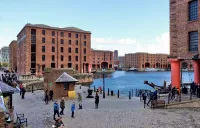
Liverpool is a port city and metropolitan borough located in...

Amazon Prime is a subscription service offering a variety of...
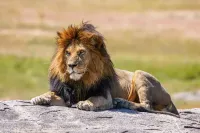
The lion Panthera leo is a large cat species native...
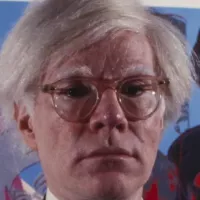
Andy Warhol - was a pivotal American artist film director...

John Lennon was a highly influential English singer-songwriter musician and...
Trending
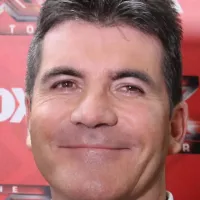
Simon Cowell is a prominent English television personality and businessman recognized for his role as a judge on various talent...
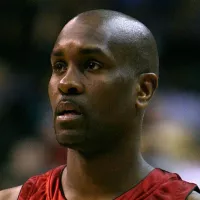
7 months ago Gary Payton Reflects on Jordan Matchup and Hypothetical Stats in Today's NBA
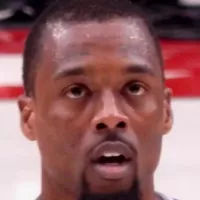
11 days ago Spurs Defeat Nuggets in Thrilling Game, Mavericks Face Nuggets
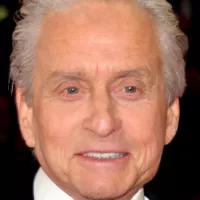
22 days ago Michael Douglas and Catherine Zeta-Jones Celebrate 25 Years of Marriage with Throwbacks
Luke Kornet is an American professional basketball player currently playing for the San Antonio Spurs in the NBA He's a...
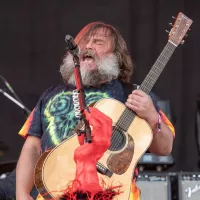
6 months ago Jack Black's Minecraft Movie Sets Premiere on HBO Max, June 20, 2025
Popular

Candace Owens is an American conservative political commentator and author...

Ilhan Omar is an American politician currently serving as the...

XXXTentacion born Jahseh Dwayne Ricardo Onfroy was a controversial yet...

Tom Cotton is an American politician and Army veteran currently...
The Kennedy Center Honors are annual awards recognizing individuals and...
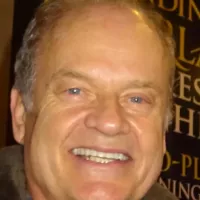
Kelsey Grammer is an accomplished American actor producer and singer...
